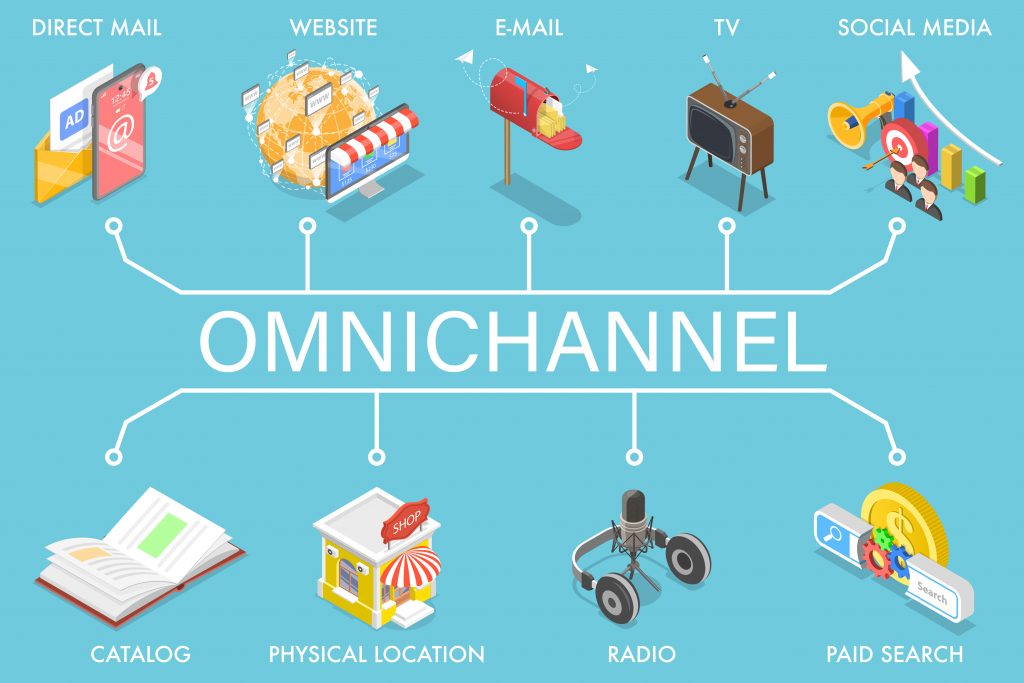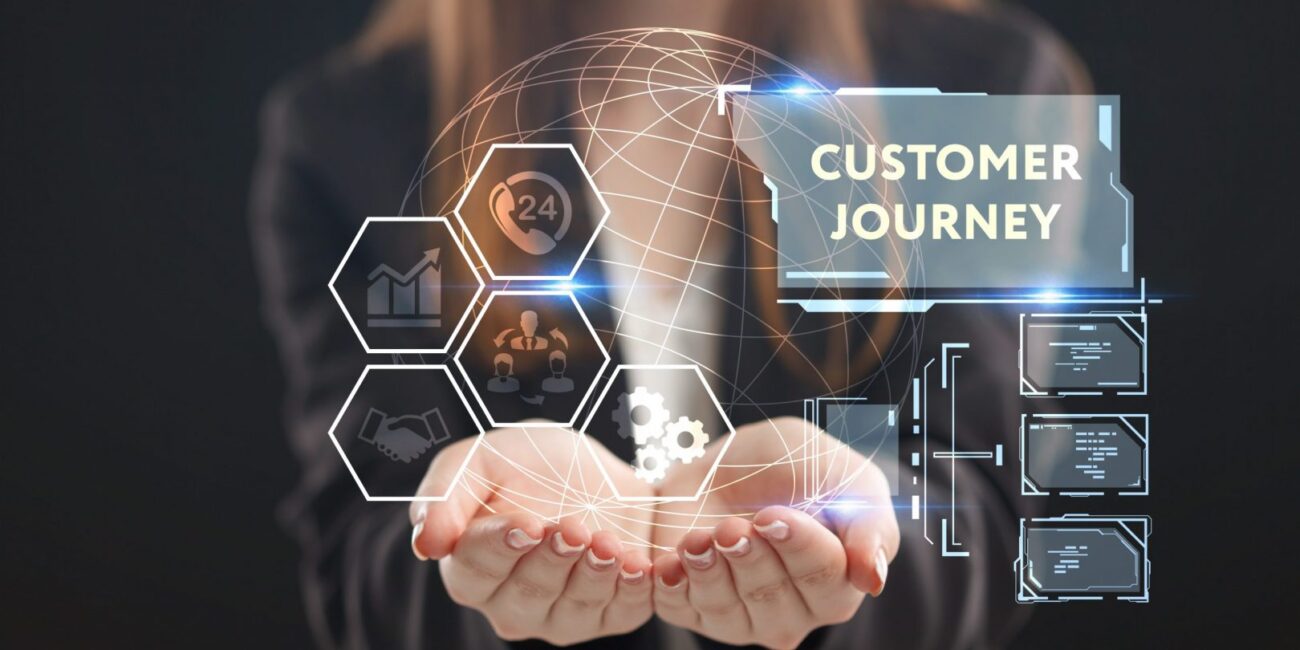At one point, businesses that wanted to reach customers online only needed to focus on a few small tasks. Build a website. Start a Facebook page. Pay for an ad.
Today, however, online channels no longer stand alone in your consumer’s mind. Increasingly, consumers expect to interact with your brand across channels without friction.
With customers becoming accustomed to jumping from Facebook Messenger to websites to brick-and-mortar stores, optimizing your customer’s journey across channels becomes a critical task. And the data is there to support this investment.
According to Harvard Business Review, omnichannel customers will spend 4% more on every shopping occasion in-store and 10% more online than customers who only interact with a business via one channel.
Optimizing your customer’s journey across channels will result in a spend increase, which equates to improved business profits.
For businesses looking to create a seamless customer journey, regardless of the channel where interactions take place, this guide will walk through the important distinctions between omnichannel and multichannel marketing, the trends occurring in this space, and practical steps for optimization.
The result is that your brand can reach your customers exactly where they are at the right time in the right way, leading to higher profits for your business.
Omnichannel Versus Multichannel
Before optimization of an omnichannel strategy can begin, it is important for businesses to understand the distinction between multichannel and omnichannel strategies.
At the most basic level, HubSpot put it well when it stated:
“All omnichannel experiences will use multiple channels, but not all multichannel experiences are omnichannel.”
A practical example of this would be the differences between the following two scenarios.
In scenario one, a local car dealership launches a website. This website offers basic information about the dealership, a contact form, and information about the brick-and-mortar showroom. Additionally, the dealership launches a Facebook page where it promotes discounts.
In this scenario, when interested buyers reach out via the website’s contact form, they get a response email answering their questions, and the interaction ends there. If they see a Facebook ad, they will need to mention it when they visit the dealership to receive the discount. If they visit the showroom after already having had a few questions answered via email, they will need to let the salesperson know they already received information via email and explain once again what they are looking for.
In scenario two, a competing local dealership also launches a website. At the same time, it also launches a Facebook page. However, for scenario two, the dealership creates a website with an interactive chatbot, partially powered by AI and partially manned by the sales team. It links its social media campaign to a form that collects user information and attaches the promotion to that contact in its database. Additionally, the website showcases real-time inventory, reflecting exactly what the brick-and-mortar dealership is currently carrying.
In this scenario, interested buyers reach out with questions via the website’s contact form, and then see the Facebook ad and click on the promotion to fill out the form. Next, they receive a text from a sales member reaches answering questions from the email, while also reinforcing the special deal being promoted via Facebook. The buyers swing by the store for a test drive. When they arrive, the sales team already knows who they are, what cars they looked at via the digital showroom, and what questions have already been answered. They also remind the buyers of the great special they are getting via the social media promotion they interacted with earlier in the week.
The differences between these two scenarios point to the central distinction between a multichannel and an omnichannel experience.
Omnichannel is interconnected and seamless. Multichannel is simply multiple siloed methods for surfacing a brand.
It is also easy to see from this example why consumers are flocking to an omnichannel experience.

The Increasing Demand for Brand Conversations
According to Statista, by 2021 the number of messaging app users worldwide is expected to reach 2.48 billion. This staggering number reflects an increasing desire for connection through conversation.
When it comes to optimizing your customer’s journey, this is critical. People want to converse with brands. They do not want to be spoken at but rather engaged in natural, real conversation.
According to recent numbers, 60% of customers say they want to be able to respond to a text message they receive from a business.
This is powerful information for brands willing to invest in optimizing this channel of conversation. Not only are consumers open to receiving text messages from brands, with 84% of consumers already receiving text messages from businesses, but these same consumers also want to initiate a conversation with your brand.
While there is untold potential for businesses to have meaningful conversations with their consumers, this must be backed by an understanding of what the customer is looking for in that conversation.
No longer do consumers want to be told what to buy. Rather, they want to converse with a brand that knows them. They want to build a relationship before committing to a purchase.
Conversations must take place naturally, and channels must be interconnected to ensure that conversations are seamless.
Not only that, but conversations should also be taking place across the customer journey. From the moment a customer is interested in searching for your service or product to the final period of decision-making, your brand should be conversing and ensuring that customers can easily reach you.
Practically speaking, this can take the form of SMS marketing strategies, website chatbots, and even strategic phone calls. The key is to ensure that when those conversions take place, the right information is in the hands of your employee.
Think back to the preceding example. Whether a customer was hearing from the dealership via email, text, or an in-person conversation, the sales staff had all the previous information gleaned to create a meaningful conversation. No one wants to be asked the same question at every new channel in which to interact with your brand. In fact, this annoyance is enough to turn away potential customers who have learned to expect brands to intuitively know them.
Gathering Powerful Data Throughout the Journey
Optimizing a customer’s journey across channels is only possible when the right data is gathered from every applicable location.
For example, in the second scenario, the dealership was collecting data from each interaction and was attributing it back to the same customer.
This is critical. Without the right standardization of data, collection of that data, and proper attribution, it is extremely difficult, if not impossible, to glean insights into your customer’s journey.
Technology allows businesses to connect their channels in meaningful ways, and it makes it possible to tie a powerful data set to contacts. From tracking what pages were viewed on your website to seeing when carts were abandoned to gleaning important information from online chats, it is possible to connect multiple data points to one customer, creating a remarkably robust view of their journey.
However, this doesn’t happen on its own. There has to be a strategy in place that ensures data is gathered in a meaningful way.
When the right strategy is implemented, the power of that data becomes significant. Not only does an optimized omnichannel customer journey improve immediate sales, but it also offers your business an outstanding opportunity for future marketing endeavors.
A/B Testing and Understanding Consumer Perceptions
With the right strategy in place and an interconnected system of channels through which you communicate with customers, it becomes critical to then use testing to understand consumer perceptions of your brand. While you might think that customers find it easy to contact you or to navigate your website, that might not be the case.
Only through proper testing and an unbiased collection of data around consumer perceptions can you pinpoint how well you are doing at optimizing the customer journey.
It all begins with an initial pulse check. Start by gathering information from customers about their current satisfaction with your brand. This will give you a benchmark to build from.
Then it’s time to test new methods and ideas. A/B testing is a great way to gather data and learn what works for your audience.
Fortunately, by constantly testing and adapting your strategy, you can improve your relationship with consumers, leading to long-term brand loyalty, no matter where you start on the journey.
Choosing the Right Partner
Realistically, operating an omnichannel strategy requires an immense amount of bandwidth. Before launching any initiative, businesses need to ask themselves these key questions:
- Do I have the personnel to staff this initiative?
- Do I have the expertise needed to ensure a smooth omnichannel experience?
- Do I know how to best harness the power of data collected throughout the customer journey?
- Do I have a solid perception of how my consumers currently view their experience with my brand?
With the increasing complexity of an omnichannel world, many brands choose to partner with a marketing expert who can guide this journey.
At J&L Marketing, we assist busy clients with building out the ideal strategy for their brand. Our goal is to ensure that your business creates a seamless experience for your clients. In today’s world, customers are no longer willing to accept a stilted journey. They are instead expecting brands to provide them with multiple avenues for connection, without missing a beat.
If you are interested in optimizing your customer journey across multiple channels, reach out to our team today. We look forward to working with you to create the ideal omnichannel strategy.



